climate change

Ecological restoration, critical for poverty reduction
By Joaquim Levy, World Bank Group Managing Director and Chief Financial Officer
Why is ecological restoration so critical to the World Bank’s mission of reducing poverty and boosting shared prosperity? Quite simply, because environmental degradation is devastating to the most vulnerable communities![]() and perpetuates poverty around the world.
and perpetuates poverty around the world.
Some 42 percent of the world’s poorest live on land that is classified as degraded. The situation becomes worse every year, as 24 billion tons of fertile soil are eroded, and drought threatens to turn 12 million hectares of land into desert.
The costs associated with environmental degradation can be compared to the impacts of a natural disaster.![]() In Indonesia, for example, a few months of peat fires created more economic damage than the Tsunami in Aceh.
In Indonesia, for example, a few months of peat fires created more economic damage than the Tsunami in Aceh.
Thankfully, there is still time to reverse this type of harm. Worldwide, about two billion hectares of degraded forest land could be restored, creating functional, productive ecosystems that can boost sustainable development. Governments and other stakeholders are motivated to make this happen – nothing was clearer from my participation in the 7th World Conference on Ecological Restoration, last week in Foz do Iguaçu, Brazil.
So how do we take the next step and make large-scale environmental restoration a reality? We need to keep a few key principles in mind:
First, we need to think of a new forest economy. Environmental restoration at the scale we need requires going beyond conservation.![]() It means integrating timber and food production, as well as energy and disaster risk management, particularly when it comes to water resources. We need to look at countries like Austria, Germany and South Korea, which have built entire rural economies on high-tech forest value chains that are not only highly productive, but also ecologically meaningful. The World Bank has supported this approach in several places, including China, where an erosion control project returned the devastated Loess Plateau to a thriving landscape that supports sustainable agriculture and the livelihoods of 2.5 million people.
It means integrating timber and food production, as well as energy and disaster risk management, particularly when it comes to water resources. We need to look at countries like Austria, Germany and South Korea, which have built entire rural economies on high-tech forest value chains that are not only highly productive, but also ecologically meaningful. The World Bank has supported this approach in several places, including China, where an erosion control project returned the devastated Loess Plateau to a thriving landscape that supports sustainable agriculture and the livelihoods of 2.5 million people.
Second, we need to find efficient, low-cost restoration solutions that can be brought to scale. This means investing in rigorously tested scientific methods, because we cannot afford to make large-scale mistakes. It also requires customized solutions capable of meeting the various restoration challenges, from evaluating whether native species are always the best choice, to considering a range of time horizons. Brazil’s commercial restoration sector is a leader in this field, with cooperative, inter-company research contributing to the success of the commercial plantation sector.
Third, we need to ensure legal rights for forests. There can be no thriving forest economy without sound tenure rights, including for Indigenous and traditional peoples. Some countries are making progress on this front. In Nicaragua, for instance, all ancestral territories of Indigenous Peoples in the Caribbean Region are now mapped and titled thanks to legal, policy, and institutional reforms that began 15 years ago, with World Bank support.
Fourth, we need to better understand the value of our forest services. Adopting natural wealth accounting that values assets such as land, forests, and minerals as a companion to GDP would help state the economic cost of degradation and the benefits of restoration. Armed with such information, Ministers of Finance may become restoration champions, and governments would have the tools to develop a forest-smart approach that works across economic sectors and at the right scale. Consider the case of Costa Rica: by establishing forest accounts, the government documented that forests contributed close to 10 times more to GDP than was previously thought.
The last missing link is financing. We need to consider all levels of financing, starting with small and medium-sized enterprises. Forest development and integrated agriculture need to be made attractive to entrepreneurs![]() , including women and the young.
, including women and the young.
In addition, tax and transfer systems must recognize the importance of environmental services. Providing strong governance and guidance on the use of environment compensation fees, such as Brazil’s “compensaçao ambiental,” ought to be a priority. Local solutions need to be discussed everywhere, along with international incentive systems.
Finally, when adequately-funded and accountable research starts to generate the right technology, sizeable financial resources will flow to restoration.
To recap: ecosystem restoration is critical for sustainable development and poverty alleviation![]() ; there are significant opportunities for putting these approaches into practice; and we have a solid understanding of the core principles that contribute to successful restoration efforts.
; there are significant opportunities for putting these approaches into practice; and we have a solid understanding of the core principles that contribute to successful restoration efforts.
At the World Bank Group, we stand ready to support countries’ restoration efforts through our financing tools and partnership programs like the Program on Forests (PROFOR). Together, our efforts can have a transformative impact on improving the lives of the poorest and benefitting the environment.
For stories and updates on related activities, follow us on twitter and facebook , or subscribe to our mailing list for regular updates.
Last Updated : 06-16-2024
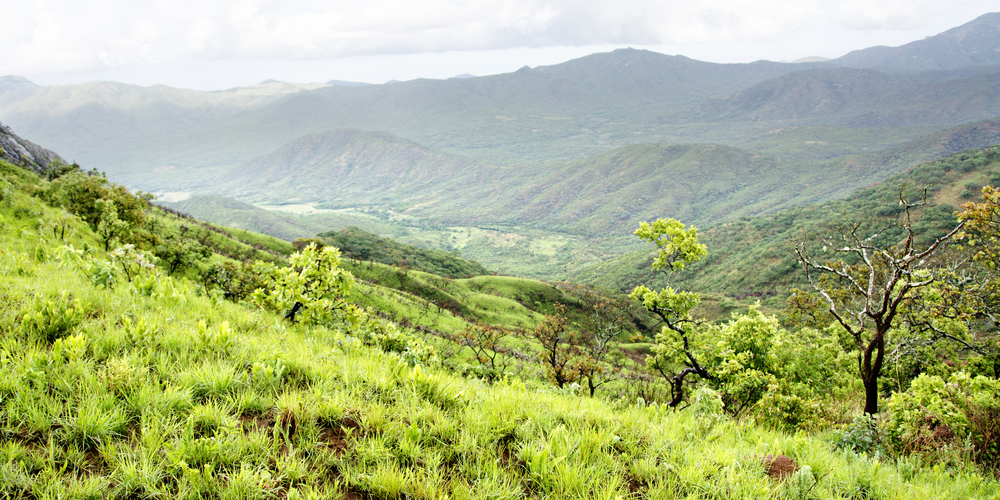
When thinking of forests, don’t forget the value of trees
Across the globe, demand for wood products is increasing and expected to quadruple by 2050. This trend is exacerbating deforestation and forest degradation. But it also presents an opportunity for a better approach to farming and managing forests.
A new report, Harnessing the Potential of Private Sector Engagement in Productive Forests for Green Growth, shows how sustainably harvesting wood products can help meet growing demand while providing jobs, mitigating climate change and conserving primary forests.
While it’s well known that trees and forests provide an important carbon sink, the carbon stored in forest products is often overlooked. Forest products and materials such as those used for construction and furniture store carbon for decades and even centuries.
Choosing wood products over other non-renewable materials, such as concrete and steel for construction materials, also offers climate benefits. Concrete and steel require fossil fuel to produce, making these alternatives much more carbon intensive. For example, producing a concrete wall puts 15 times more carbon dioxide into the atmosphere than making a wooden one.
The new report, funded by the Climate Investment Funds (CIF) and the Program on Forests (PROFOR), examined the economies of six countries - Ethiopia, Colombia, Mexico, Mozambique, Peru and Vietnam - to estimate the potential climate mitigation benefits from forest-based supply chains. Together, the six countries could sequester more than 150 million tons of CO2e (see table below) by 2030 with adequate investments in forest restoration and the increased production and use of wood products. Such an approach could help countries meet their climate commitments under the Paris Climate Agreement.
Investing in wood supply to meet demand through landscape restoration and other means also brings benefits, especially by creating new forest industry jobs in rural areas. Potential employment benefits in the six countries studied are depicted in the table below. In addition, projected demand for wood products could encourage the private sector to make long-term investments in productive forests, plantations, and wood processing.
Moving forward on sustainably harvesting forests is a delicate balance between production and conservation. If promoting forest products leads to deforestation, then climate mitigation is lost. To get the balance right, governments must create an enabling environment through better law enforcement and governance. That would help to protect and more sustainability use forests, improve land tenure, and provide the incentive mechanisms to attract private sector investments. Plantations will be key for renewable energy - sustainable charcoal and wood chips - in the future. Private investors, rural communities and forest owners also need technical assistance to help with forest management and production, as well as easier and quicker access to market information.
“Investing in sustainably managing and using forests offers longer-term benefits over the frequently under-productive and disorganized use of many forests today,” says Gerhard Dieterle, program manager for the World Bank’s Forest Investment Program. “As found in this study, doing so would unquestionably benefit people and the planet.”
Click here to watch the video on the interview with the authors.
For stories and updates on related activities, follow us on twitter and facebook , or subscribe to our mailing list for regular updates.
Last Updated : 06-16-2024
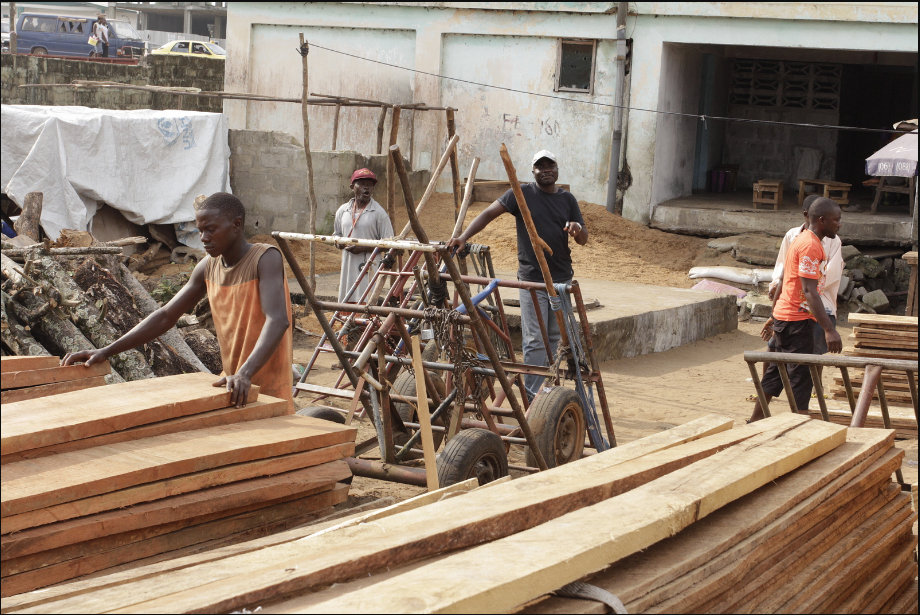
How Productive Forests can Help Foster Green Growth and Mitigate Climate Change
Across the globe, demand for wood products is increasing and expected to quadruple by 2050. This trend is exacerbating deforestation and forest degradation. But it also presents an opportunity for a better approach to farming and managing forests.
A new report, Harnessing the Potential of Private Sector Engagement in Productive Forests for Green Growth, shows how sustainably harvesting wood products can help meet growing demand while providing jobs, mitigating climate change and conserving primary forests.
While it’s well known that trees and forests provide an important carbon sink, the carbon stored in forest products is often overlooked. Forest products and materials such as those used for construction and furniture store carbon for decades and even centuries.
Choosing wood products over other non-renewable materials, such as concrete and steel for construction materials, also offers climate benefits. Concrete and steel require fossil fuel to produce, making these alternatives much more carbon intensive. For example, producing a concrete wall puts 15 times more carbon dioxide into the atmosphere than making a wooden one.
The new report, funded by the Climate Investment Funds (CIF) and the Program on Forests (PROFOR), examined the economies of six countries - Ethiopia, Colombia, Mexico, Mozambique, Peru and Vietnam - to estimate the potential climate mitigation benefits from forest-based supply chains. Together, the six countries could sequester more than 150 million tons of CO2e (see table below) by 2030 with adequate investments in forest restoration and the increased production and use of wood products. Such an approach could help countries meet their climate commitments under the Paris Climate Agreement.
Investing in wood supply to meet demand through landscape restoration and other means also brings benefits, especially by creating new forest industry jobs in rural areas. Potential employment benefits in the six countries studied are depicted in the table below. In addition, projected demand for wood products could encourage the private sector to make long-term investments in productive forests, plantations, and wood processing.
Moving forward on sustainably harvesting forests is a delicate balance between production and conservation. If promoting forest products leads to deforestation, then climate mitigation is lost. To get the balance right, governments must create an enabling environment through better law enforcement and governance. That would help to protect and more sustainability use forests, improve land tenure, and provide the incentive mechanisms to attract private sector investments. Plantations will be key for renewable energy - sustainable charcoal and wood chips - in the future. Private investors, rural communities and forest owners also need technical assistance to help with forest management and production, as well as easier and quicker access to market information.
“Investing in sustainably managing and using forests offers longer-term benefits over the frequently under-productive and disorganized use of many forests today,” says Gerhard Dieterle, program manager for the World Bank’s Forest Investment Program. “As found in this study, doing so would unquestionably benefit people and the planet.”
Click here to watch the video on the interview with the authors.
For stories and updates on related activities, follow us on twitter and facebook , or subscribe to our mailing list for regular updates.
Last Updated : 06-16-2024
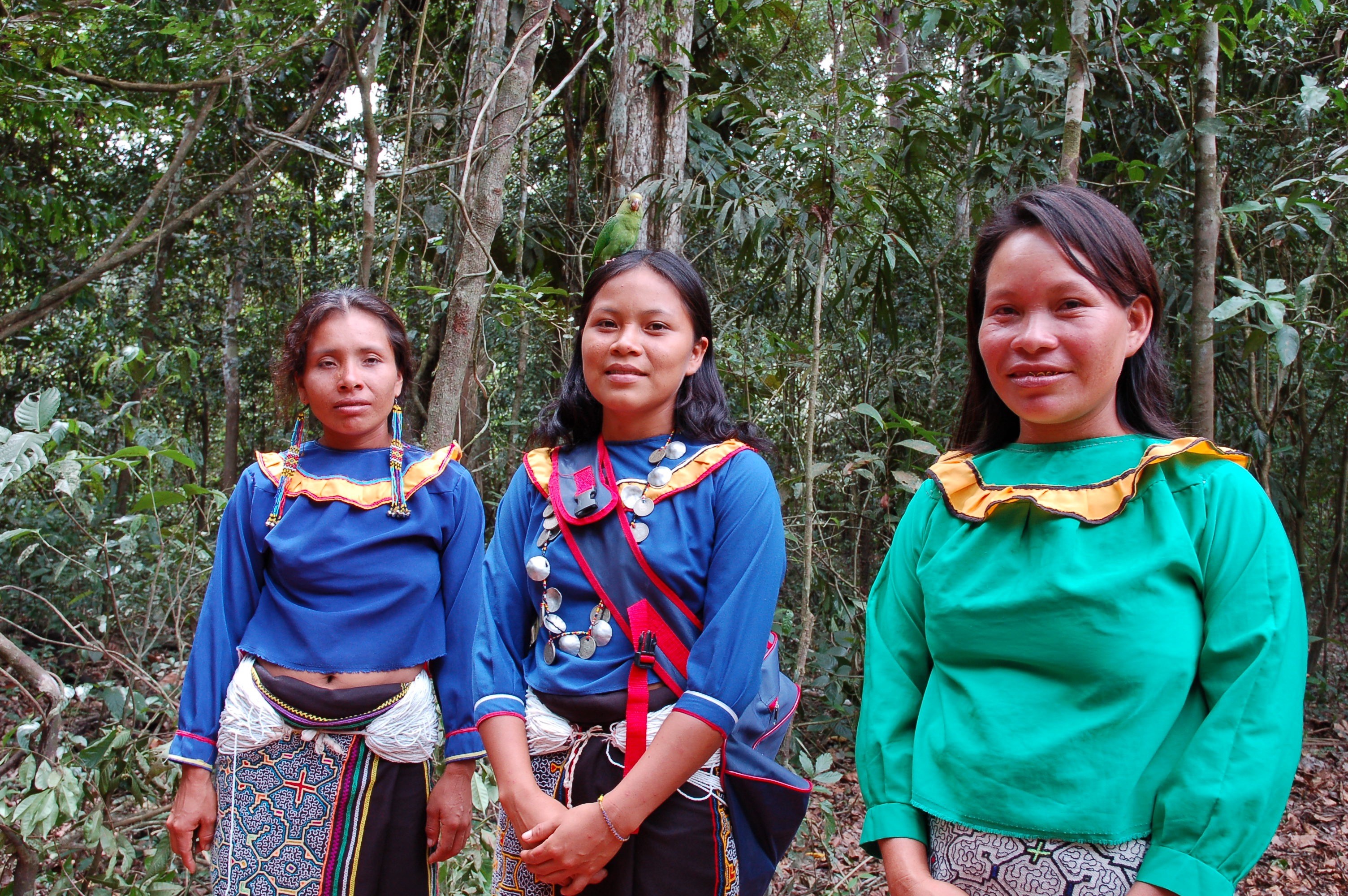
Resolving forest tenure is key to promoting sustainable development and human rights
Imagine that you’re standing in a forest. Far below your feet, there could be valuable oil or mineral deposits that are probably owned by a national government. The soil that you’re standing on belongs to whoever holds a title to that land – an individual, a corporation, a community, or a local or federal authority. But who owns the trees?
In Latin America the answer to that question is, increasingly, indigenous peoples and local communities. “There was a spike in the trend of transferring access and control of forest resources from governments to indigenous communities,” said Gerardo Segura Warnholtz, Sr. Natural Resources Management Specialist and author of a new, PROFOR-supported book on forest tenure regimes in Latin America. “These changes were driven by governments realizing that they don’t have the capacity to adequately manage forests, and by the demands of local communities advocating for forest rights.”
Worldwide, secure land and forest tenure is gaining recognition as a key component of many sustainable development efforts, from promoting economic growth, to conserving biodiversity and reducing carbon emissions, to protecting human rights. “Tenure is seen more and more as a common denominator across several sectors, including agriculture, rural poverty, and climate change initiatives like REDD+ that depend on clarifying ownership of carbon,” Segura said.
Encouragingly, studies have shown that, where communities have strong forest rights and sufficient government support, deforestation rates (and associated carbon emissions) are much lower compared to areas outside community forests. This is crucial from a climate change perspective, as an estimated 25 percent of all carbon stored aboveground in tropical forests is being collectively managed by indigenous people and local communities.
However, many indigenous peoples are part of tenure systems that lack sufficient legal standing, and individuals may face severe challenges in exercising political power. “We are talking about basic human rights,” Segura emphasized. “It’s especially important to remember that most forested lands are, or have been, inhabited by local communities, many of whom have been marginalized.”
Consequently, Latin America’s recent efforts to reform forest tenure regimes are a crucial step in the right direction. But do they go far enough? Segura and his research team used the “bundle of rights” concept to analyze 10 tenure systems in six different Latin American countries: Argentina, Colombia, El Salvador, Honduras, Nicaragua and Peru. Of the 10 systems, the team found that seven meet all of the requirements for a full bundle of rights, meaning that communities on these lands were entitled to access forests and exclude others from doing so; use and manage forest resources at their discretion; challenge a government’s decision to infringe on these rights; and hold these rights indefinitely.
That said, many countries have yet to fully implement these legal frameworks. In Peru, for instance, land titling initiatives have moved slowly, and have concentrated on the Amazon region, where local and national activism efforts have been the strongest. Across all of the countries analyzed, limited institutional, technical and financial capacity poses obstacles to comprehensive forest tenure reform.
In addition, three regimes in Segura’s analysis maintain some restrictions on the bundle of rights, while El Salvador has yet to reestablish collective land ownership since it was abolished in the late 1800s. The country also only recognized the legal status of indigenous minorities in 2014. “El Salvador is the outlier in this study, but in a general way it acts as a good illustration of what happens when we don’t act,” explained Segura. “El Salvador lost most of its forest a long time ago, and its agricultural economy is on the verge of collapse. We are seeing so many threats to forests around the world - if we’re not more careful about forest management, the consequences could be devastating.”
Segura’s hopes that, with the publication of his new book and ongoing PROFOR work to consolidate and promote understanding and best practices around forest tenure reform, governments and development institutions will be convinced that undertaking forest tenure reform is well worth the risk.
“This topic is seen as so complicated, risky and contagious,” he said. “How can we de-risk it? We need to translate the knowledge we have into tools that are directly useful to practitioners. Governments need to keep devolving rights to communities, as well as establishing and enforcing management rules in a transparent and inclusive way. If we can achieve that, there will be positive outcomes for conservation and for development.”
For stories and updates on related activities, follow us on twitter and facebook , or subscribe to our mailing list for regular updates.
Last Updated : 06-16-2024
Understanding the Impacts of Climate Change on Forest Fires and Identifying Options for Resilience
Program Summary
The development objective of this activity is to increase knowledge and awareness about the impacts of forest fires in a changing climate and identify effective response strategies and actions to build the resilience of forests and communities.
Challenge
Forest fires degrade forest ecosystems and impair on their capacity to serve global development and poverty reduction objectives. Substantial and rapid shifts are projected for future fire activity across vast portions of the globe, including tropical and subtropical regions. Projections suggest that wildfires will become so frequent within this century that it will reach a “new normal.” Therefore, it is important to develop a better understanding of the interactions between climate change and forest fires in terms of their scale and intensity and identify forest management options for increased resilience. This activity aims to contribute toward filling this knowledge gap by taking stock of the state of knowledge on the key issues. Several studies have already been conducted by PROFOR and other teams at the Bank to highlight the importance of preventing and managing forest fires. This activity will build on the previous work and deepen the understanding of these impacts and the type and scale of investments required to tackle this challenge.
Approach
As the main activity, a Global Expert Workshop on Forest Fires and Climate Change would be held at the International Union of Forest Research Organizations (IUFRO) headquarters in June 2018 in Vienna, Austria. The expert workshop would be co-hosted by IUFRO and PROFOR. It would bring together leading scientific experts; government representatives from key countries in East Asia, Africa, and Latin America; and representatives from World Bank global practices and regional units.
The expert workshop would discuss (i) the spectrum of forest fire types and their contributions to global greenhouse gas emissions; (ii) future climate change scenarios and implications for forest fire as well as related environmental, social, and economic impacts and vulnerabilities; and (iii) options for adaptation with particular emphasis on forest landscape restoration as a forest-smart solution for increasing resilience in the face of climate change. The expert workshop would also be informed of relevant findings of the Global Forest Expert Panel (GFEP) scientific assessment on forests and water, coordinated by IUFRO on behalf of the Collaborative Partnership on Forests.
The expert workshop would result in an issue paper that comprised all the information presented during the workshop, including the main findings and conclusions, as well as a set of key messages for decision makers. The expert workshop would also identify limitations in current knowledge and outline potential future activities.
Results
This project has been completed. The Global Expert Workshop on Forest Fires and Climate Change was conducted July 2-4 in Vienna, Austria. The three-day workshop brought together 32 scientists and governmental experts from around the globe and World Bank representatives to discuss the complex forest fire–climate change–restoration nexus.
The Occasional Paper 32 - Global Fire Challenges in a Warming World, Summary Note of a Global Expert Workshop on Fire and Climate Change, affirmed that the warming climate contributes significantly to the increase in the frequency and intensity of uncontrolled forest fires, thereby further degrading forest ecosystems and impairing their capacity to produce the forest goods and services that play an important part in global development and poverty reduction objectives. Climate change, particularly hotter and drier seasons, combined with environmental and demographic changes are exceeding traditional fire management approaches’ capacity to cope and are economically unsustainable.
The expert group concluded that fire and climate-related weather changes are strongly linked, leading to more severe fire events, and that there is a need to prepare for a “new normal” in which fires will occur outside the traditional fire seasons and risk zones, including agricultural areas. Government strategies will need to take on a different approach to effectively manage forest landscapes because this trend will only get worse.
The solution lies increasingly in more holistic land management and governance approaches including more active investments in fire prevention measures, fire-smart economic land uses, better informed and connected fire information and early warning systems, and community-based education, training, and mitigation activities in addition to traditional suppression measures.
Where tropical forests or peatlands already suffered substantial alterations, the workshop concluded that there is a need to think beyond those solutions. Restoration of ecological functions of degraded forests and peatlands, investment in fire-free perennial economic solutions in risk areas and strategic economic land uses will need to be an integral part of interventions.
Some of the presentations at the workshop, include knowledge that has informed, is informing, and will continue to inform policies, projects/ programs and data gathering/information/modelling globally.
For stories and updates on related activities, follow us on twitter and facebook , or subscribe to our mailing list for regular updates.
Last Updated : 06-16-2024

Strengthening the Implementation Capacity of Forest-based NDC Commitments in Central America
PROGRAM SUMMARY
The objective of this activity is to strengthen the capacity of Governments in Central America (Guatemala, El Salvador, Honduras, Nicaragua, Costa Rica and Panama) to develop strategies for a low-carbon emission economy in line with the commitments made at COP21 (also called the Paris Climate Conference) through a broad based regional policy and technical dialogue. The activities supported by PROFOR will specifically target the land-use, land-use change, and forest sector and will create synergies with other sectors identified in the countries’ Nationally Determined Contributions (NDCs), such as agriculture, water, transport, and energy. In addition, the proposed activities will support regional dialogue and exchange at high policy levels, technical exchanges through field visits and targeted workshops (South-South Knowledge Exchange), and analytical work responding to knowledge demand as identified by the countries.
CHALLENGE
Central America is highly vulnerable to the effects of climate change and natural disasters. Given the mountainous terrain and distinct coast lines, the sustainable management of forests, including mangroves, is a core element in enhancing the countries’ resilience to climate change and natural disasters. The importance of sustainable management of forests and trees is confirmed by the fact that all Central American countries have identified forestry as a key sector in their NDCs and are REDD+ countries.
However, Central American countries continue to struggle with the implementation of their NDC commitments. While the mobilization of financial resources is commonly seen as the most challenging aspect for NDC implementation, developing implementation plans and associated monitoring systems, establishing functioning institutional arrangements, and strengthening the capacity for economic analyses for decision making are similarly challenging. Although Central American countries share this common set of challenges in a broad sense, there are many differences between the institutional and technical capacities of these countries for managing forest resources and addressing NDC targets. The spectrum ranges from countries like Costa Rica that have achieved worldwide recognition for their massive reforestation achievements over the past decades, to countries like El Salvador and Guatemala that are still characterized by large-scale deforestation and land degradation.
APPROACH
The activity was organized into three pillars: Regional Dialogue, Strengthening Institutional Capacity, and Developing Strategies and Plans. They were accomplished through Technical South-South Exchange and Analytical work. The activity was fully integrated into the World Bank’s programmatic approach on “Supporting Central American Countries in Implementing COP 21 Commitments,” which addressed the needs of Central American countries for implementing their NDCs and providing a platform for regional exchange and dialogue, technical and financial assistance, learning and capacity building initiatives in support of NDC implementation. The activities supported by PROFOR targeted LULUCF and created create synergies with activities in other sectors that were supported through complementary funding sources.
RESULTS
This project has been completed.
Main Outputs:
- Regional workshop
- Analytical Framework, completed by each country
- A roadmap for each country, including the prioritized forest actions to be implemented to achieve their NDC commitments, highlighting countries’ assistance needs.
Main Outcomes
- Improved understanding of national and regional challenges to implement NDCs.
- Enhanced inter-institutional capacity to assess potential interventions in the forestry sector derived from COP21 commitments.
- Improved capacity of countries to prioritize activities and identify complementary sources of funding to support LULUCF related activities.
- Enhanced national capacities to formulate forest related NDC frameworks.
- Improved ability of countries to implement forest related activities that contribute to NDC goals.
- Improved regional cooperation on LULUCF, including an established collaboration platform.
- Identification of specific commitments in the forest sector.
For stories and updates on related activities, follow us on twitter and facebook , or subscribe to our mailing list for regular updates.
Last Updated : 06-16-2024
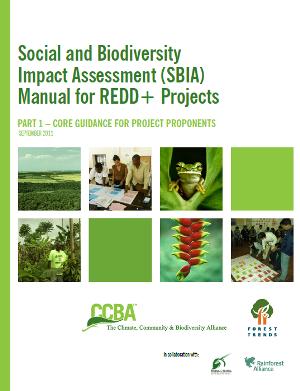
Share
Attachments
Annex 3. CCAH, Peru SIA Case Study 2011_small_0.pdf
Annex 2. GuateCarbon, Guatemala SIA Case Study 2011 Edited_small_0.pdf
Annex 1 Surui Carbon Project SIA Case Study 2011_small_0.pdf
Report on SIA Case Studies for PROFOR_0.pdf
Authors/Partners
Authors: Forest Trends'Â Michael Richards and Steve Panfil with key inputs by Nigel Pitman, Steven Price, Natasha Calderwood and Julie Fischer.Partners: Forest Trends and CCBA, with Rainforest Alliance and Fauna & Flora International (FFI).Sponsors: PROFOR, Morgan Stanley, USAID-TransLinks, GEF-UNDP, Rockfeller Foundation and NORAD provided financial support.
Social Impact Assessment of Forest Carbon Projects (toolkit)
CHALLENGE
Are land-based carbon projects good for local people?
Many rural communities are keen to embark on carbon projects as a way of generating income, jobs, and other social benefits. Offset buyers are also attracted to the idea of reducing emissions and simultaneously helping local people. Others are wary that these projects may do more harm than good. However, until recently, there was no clear methodological guidance for carbon project developers to track social and biodiversity impacts. The combination of robust standards for assessing the social performance of projects, and the use of credible methods of social impact assessment could help ensure positive outcomes for local people.
The emphasis in the early years of the carbon markets has been mainly on assuring the integrity of project emission reductions; co-benefits have received much less attention. But the balance is changing, and there are justifiable concerns that co-benefits must, like carbon, be real, ‘additional’ and, as far as possible, measurable. This is partly necessary for market confidence as offset buyers increasingly seek evidence that they are getting what they pay for, including co-benefits. On ethical or equity grounds, carbon projects must at the very least ‘do no harm’ (See related IIED conclusions on REDD+ in the miombo drylands.)
A cost-effective and credible impact assessment toolbox would help carbon project developers meet the verification requirements of the Climate, Community & Biodiversity (CCB) Standards and contribute to building more robust, sustainable projects.
APPROACH
In response to such issues, Forest Trends has formed an alliance with three other NGOs – the Climate, Community and Biodiversity Alliance (CCBA), Rainforest Alliance, and Fauna & Flora International (FFI) – to produce a user-friendly Manual for project proponents on how to conduct cost-effective and credible social impact assessment. Support for this project comes from PROFOR, Morgan Stanley, NORAD, GEF-UNDP, and USAID-Translinks.
The manual is intended for carbon offset project designers and implementers who are not specialists in monitoring and evaluation (M&E).
The Manual was field-tested in 2010 in Brazil, Guatemala and Peru.
RESULTS
Forest Trends released a first version of its manual in June 2010, proceeded to test it in the field (see case studies listed on this page) and solicited feedback. A second version, which integrated biodiversity concerns as well, was released in the fall of 2011 in three parts: a core guidance document and two toolkits (for social and bioversity impact assessments).
Guidance to project developers has been provided by regional training workshops held in Peru (June 2010), Tanzania (October 2010), Kenya (August 2011 with GEF-UNDP funding) and DRC (September 2011 with USAID-Translinks funding). This has resulted in training of approximately 80 terrestrial carbon project developers and other REDD+ stakeholders from about 10 countries. These workshops involved hands-on training using ‘real’ REDD+ projects as case studies over a period of 3-4 days.
In Tanzania, the Tropical Forest Conservation Group (TFCG) REDD project in Lindi District has undertaken a large scale SIA exercise in 2011 following their participation in the SIA Training workshop in Zanzibar in October 2010.
FINDINGS
Experience during field testing and further training in social impact assessment shows that the benefits of using the ‘theory of change’ approach to impact assessment go well beyond the generation of a credible social monitoring plan which can meet the CCB or other multiple benefit standards. These wider benefits include: strategic project design necessary for achieving social and biodiversity objectives (clear objectives are essential for identifying monitoring indicators); participation of project stakeholders; promotion of adaptive project management; and the ease of understanding and explaining the results to a range of stakeholders.
Keys to better participation of local stakeholders include the quality of the ‘focal issue working group’ facilitators (so the latter need to be more carefully selected and trained); some prior training or exposure for community participants; the use of a ‘practice activity’ to develop good practice consultation skills; and various issues around the more effective participation of local stakeholders, especially women.
Based partly on the costs in the three case studies, the authors estimate that the cost of generating a credible social monitoring plan using their approach will be in the range $25,000-35,000 depending on various factors.
For stories and updates on related activities, follow us on twitter and facebook , or subscribe to our mailing list for regular updates.
Author : Authors: Forest Trends'Â Michael Richards and Steve Panfil with key inputs by Nigel Pitman, Steven Price, Natasha Calderwood and Julie Fischer.Partners: Forest Trends and CCBA, with Rainforest Alliance and Fauna & Flora International (FFI).Sponsors: PROFOR, Morgan Stanley, USAID-TransLinks, GEF-UNDP, Rockfeller Foundation and NORAD provided financial support.
Last Updated : 06-16-2024
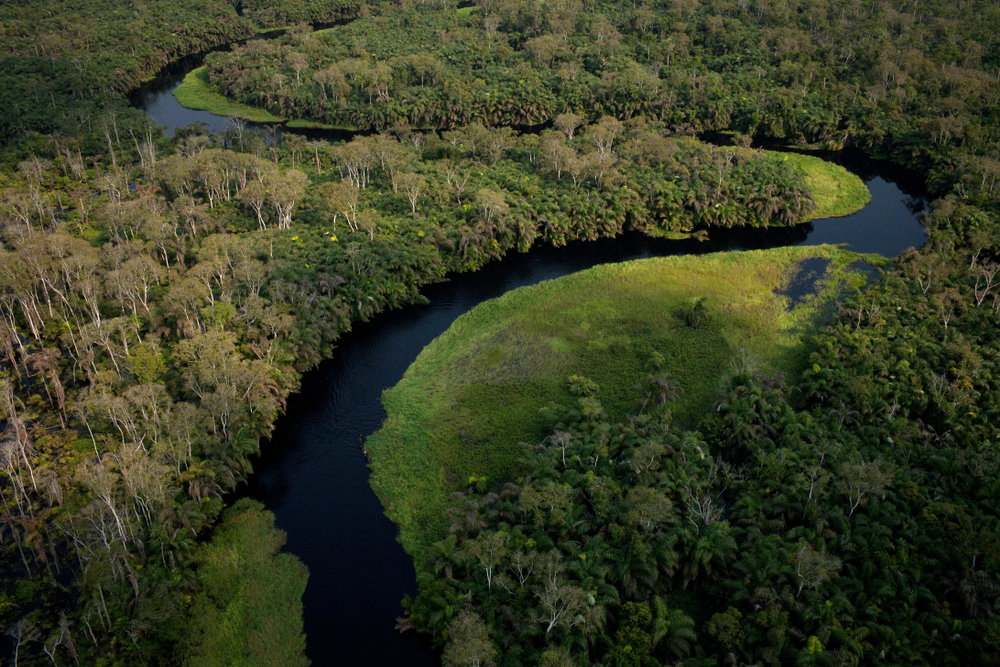
Understanding the Forest-Water Interactions in the Congo Basin
PROGRAM SUMMARY
The development objective of this project is to improve the understanding of forest-water interactions in the Congo Basin across World Bank project teams, client countries and climate scientists in Africa, and to strategize potential application to development programs and policies in the region. The analysis seeks to use emerging data and research to identify links between forest loss and degradation and water resources in the Congo Basin in the context of climate variability, covering impacts both locally and from a regional hydrologic cycle perspective.
CHALLENGE
The Congo Basin represents roughly 70% of Africa’s forest cover and is the second largest contiguous tropical forest in the world after the Amazon Basin. The Congo Basin provides many ecosystem services (carbon and non-carbon) but the forests are under pressure from economic activity such as logging, agriculture, energy, transport, and mining, and satellite-based data show that annual rates of deforestation have doubled since 1990 (World Bank 2013). Climate change is predicted to impact the Congo Basin significantly: since the 1950's, the region has experienced a 1°C increase in mean annual temperature (Niang et al. 2014; Fuller et al. 2018); by the 2080's, climate models suggest temperatures will increase 3 to 5°C and precipitation will decrease by 40% (Fotso-Nguemo 2016).
Understanding the impacts of forest loss within the Congo Basin and regionally is limited due to limited information on the linkages between forest loss and environmental services in the Congo Basin, particularly of the role of the forest in generating rainfall both locally and regionally. While much of the research related to the impact of tropical forests on rainfall and temperature has been undertaken in the Amazon, the few studies that have been conducted in the Congo Basin indicate that the region is a major source (17%) of moisture for West Africa (Cadet and Nnolli; Gong and Eltahir). One study estimates that the rain forests of West Africa may account for 30-40% of the annual rainfall in the Ethiopian highlands (Ellison 2018). Others suggest that the main source of rainfall in the Congo Basin is evaporation from the Great Lakes and that the Congo forest basin in turn generates much of the rainfall not only in the Congo basin (75-95%) (Brinkman 1983 in Job 1994) but also in the Sahel (van der Ent et al. 2010). At the same time, the drying trend in the Basin suggested by some scientific papers (Zhou et al. 2014) may impact this “water pump” service it provides. Such impacts are well described for the Amazon, where scientists have warned of an “Amazon dieback” or “savanization” of the Amazon (Vergara and Scholz 2011).
APPROACH
- The activity expanded the available evidence base through the production of an innovative online, interactive e-book. This e-book/knowledge portal houses both a data and analytics portal for the Congo Basin across numerous social, economic, and environmental themes; and a knowledge portal containing relevant literature, reports, investments, videos and programs in the Congo Basin.
- Community of Practice Formed. The team held numerous consultations (both in-person and virtually) with Bank teams working within the region, relevant academic experts, donor and other organizations. The CoP distribution list developed had over 200 people and is expected to be useful for the future as well.
- Two global virtual discussions undertaken. The first discussion session was held in September 2019 with over 50 participants; a smaller, more focused session was held in December 2019 with about 20-25 participants.
For stories and updates on related activities, follow us on twitter and facebook , or subscribe to our mailing list for regular updates.
Last Updated : 06-16-2024
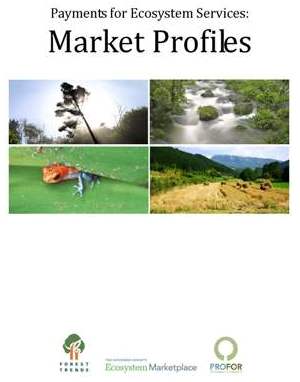
Share
Related Links
Report: Payments for Environmental Services: Market Profiles
Authors/Partners
Ecosystem Marketplace, Forest Trends, PROFOR
The Matrix: Mapping Payments for Ecosystem Services
What is the composition and size of the global market for payments for ecosystem services (PES)?
In an effort to answer this question, PROFOR supported an endeavor to devise a matrix which maps the size, environmental and community impacts, participants and shapers, and market trends for PES in the forestry and other sectors.
MAIN FINDINGS
The findings are broad in scope and complex. A few examples of trends uncovered during this process are:
- While most PES markets are growing at approximately 10 to 20 percent a year, the carbon markets are skyrocketing at 200 to 700 percent a year. The Voluntary Carbon market, where the lion’s share of the land use and land use change and forestry project take place, is growing at a faster rate than the regulated carbon market.
- The participants and experts surveyed believe existing markets have the potential to address in a significant way the global environmental issues of biodiversity loss, water pollution and climate change – but may not be living up to their potential. One major stumbling block continues to be transparent information and capacity.
- To achieve the sustainable management of ecosystem services, PES schemes must be designed and implemented carefully, intelligently, and adaptively.
- An important aspect across all of these markets will be to ensure that the communities and small scale producers are able to actively participate and benefit from ecosystem service markets. This will mean developing instruments to provide support, such as aggregation services to communities, shaping regulation to engage local small-scale providers, and clarifying tenure and user rights associated with these new opportunities.
For stories and updates on related activities, follow us on twitter and facebook , or subscribe to our mailing list for regular updates.
Author : Ecosystem Marketplace, Forest Trends, PROFOR
Last Updated : 06-16-2024
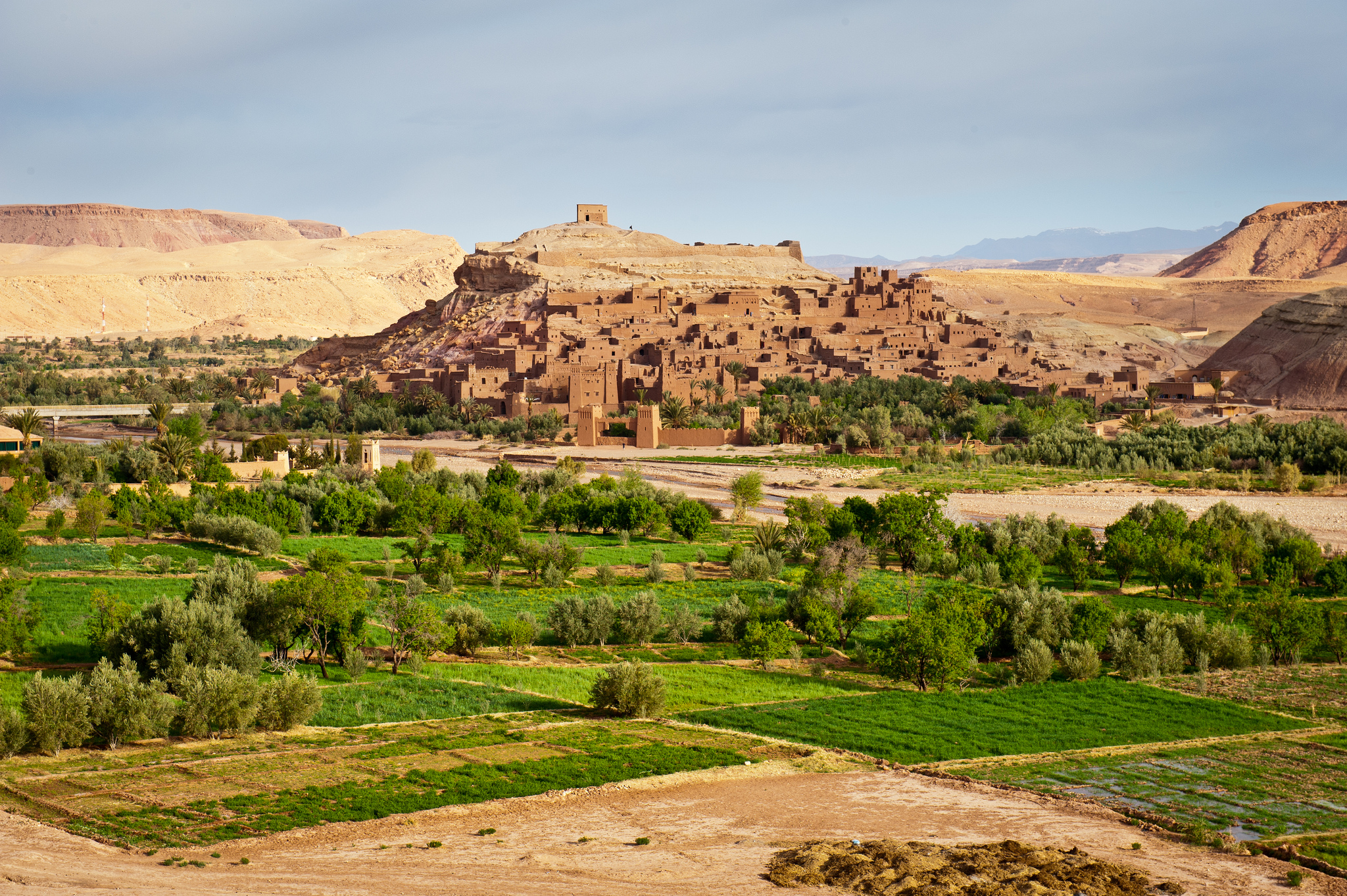
Sustainable landscape management for improved livelihoods in the Middle East and North Africa
Program Summary
This PROFOR activity aims to build the necessary evidence base and rationale for developing a regional and harmonized program on landscape restoration and sustainable management in the arid, semi-arid, and desert areas of sub-Saharan Africa, the Maghreb, and the Mashreq.
Challenge
In MENA and sub-Saharan African countries, there is a growing awareness of the important social, economic and environmental roles played by forests, rangelands, and oasis landscapes. All of these ecosystems face threats from agricultural expansion and increasing demand for food, fiber, fuel, and minerals, as well as misguided agricultural policies.
There is also growing evidence of significant negative externalities from landscape degradation - including the impacts of climate change, biodiversity loss, air pollution, soil erosion, rural poverty, and migration. These issues are gaining political attention at the global, regional, and national levels, but while several initiatives have been launched to combat landscape degradation and strengthen resilience to climate change, more transformative investment is needed.
Approach
This activity will first review existing literature on the extent, impact, and economic costs of land degradation and desertification over the last couple of decades in MENA and Sub-Saharan African countries.
Subsequently, the team will assess progress made by national and regional restoration programs, and identify the primary barriers to furthering that progress using PROFOR’s PRIME framework. Other land restoration programs will be evaluated for lessons learned and applicability to the targeted regions, including experiences from China (e.g. the Green Wall Initiative) and the United States (e.g. actions taken to combat the Dust Bowl phenomenon).
Based on this analysis, this activity will explore how the World Bank can best leverage its convening power to bring together (and finance) restoration initiatives. An economic feasibility study will be carried out, looking at the potential for a regional program on landscape restoration and sustainable management.
Results
- Sustainable Land Management & Restoration in the MENA Region – Issues, Challenges and Recommendations
- Sand and Dust Storms in the MENA Region – Sources, Costs and Solutions
For stories and updates on related activities, follow us on twitter and facebook , or subscribe to our mailing list for regular updates.
Last Updated : 06-16-2024








